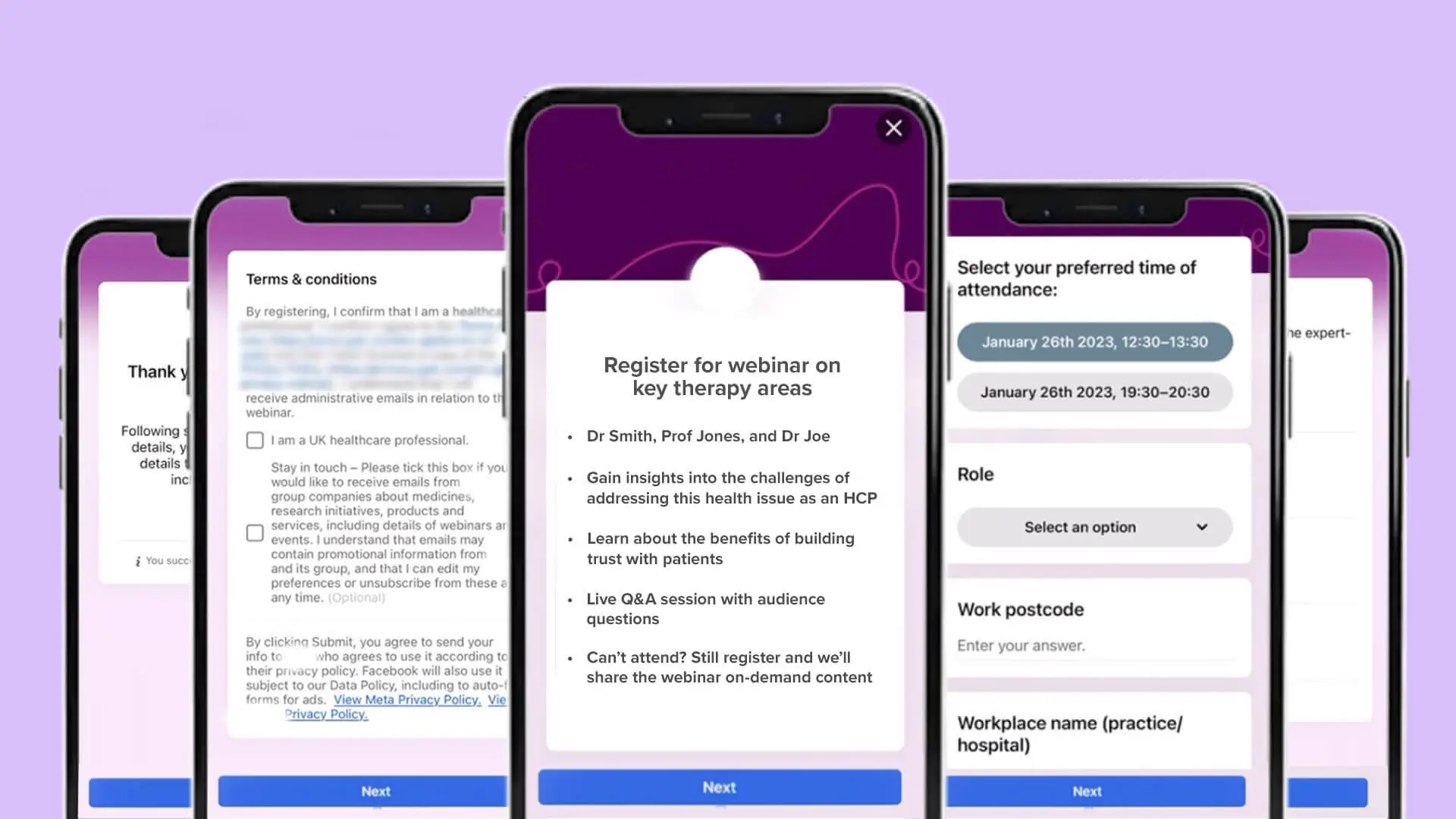Maximising HCP registrations: Pharma's guide to in-channel forms
In-channel forms can increase your conversion rate by up to five times compared to directing healthcare professionals (HCPs) to an external webpageKey takeaways
- In-channel forms are digital consent forms hosted in-platform on social media channels such as Meta or LinkedIn
- They provide smoother user experiences and drive proven results in increasing HCP registrations
- In-channel forms can easily be customised to support the compliant delivery of pharma content
Introduction
Are you looking to increase HCP registrations for your events or on-demand content? In-channel forms are the solution you need.
This registration method can increase your conversion rate by up to five times compared to directing HCPs to an external webpage.
But what are in-channel forms, and how should you use them? Read on to find out.
What is an in-channel form?
An in-channel form is a registration form hosted on a social media platform. It opens directly within the user's Meta or LinkedIn feed, and pre-populates personal information for your target customers to streamline sign-up.
These LinkedIn or Meta forms reduce the effort the user needs to expend in order to complete the form, and result in a better user experience and higher conversion rates.

In-channel forms drive proven results
I've conducted multiple A/B tests comparing in-channel forms to external webpages using Meta experiments. Every time, LinkedIn forms and Meta forms outperform the competition. I now recommend them exclusively to pharma clients.
But there are more benefits to in-channel forms than just performance data alone.
- Sleek user experience: These forms open directly in the channel that the user is already happily browsing, providing a faster, more frictionless experience
- Enhanced optimisation: When driving traffic to an in-channel form, the channel algorithm will find more people likely to submit the form. External webpages face optimisation challenges due to tracking issues, privacy settings, the decline of third-party cookies, and more
- Tailored forms: You can customise your form fields to gather the specific information you need. This is especially useful for collecting work postcodes and addresses to effectively verify an HCP
- Privacy compliance: Targeting HCPs with in-channel forms is 100% compliant with Meta and LinkedIn's terms. You can include links to your privacy policy and tailor your T&Cs accordingly
- Disclaimers: To satisfy medical reviewers, you can easily add necessary pharma disclaimers, such as the job code and date of prep, and notes that ‘product information will be discussed’ in related assets
- Secure data storage: Data from in-channel form sign-ups is securely stored in your database within your social ad account, accessible only by your page admins
- eConsent collection: In-channel forms allow you to tailor tick boxes for HCPs to confirm their status and consent to be contacted about products and events
- Integrations: You can handle data manually by downloading it from the platform or integrating it directly into your CRM using tools like Zapier
If you're not using in-channel forms in your HCP campaigns now, why not take your HCP engagement to the next level and give them a try?
